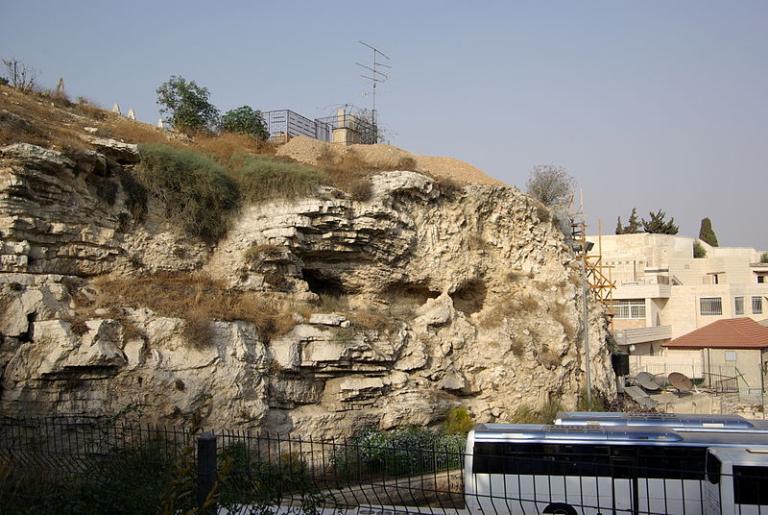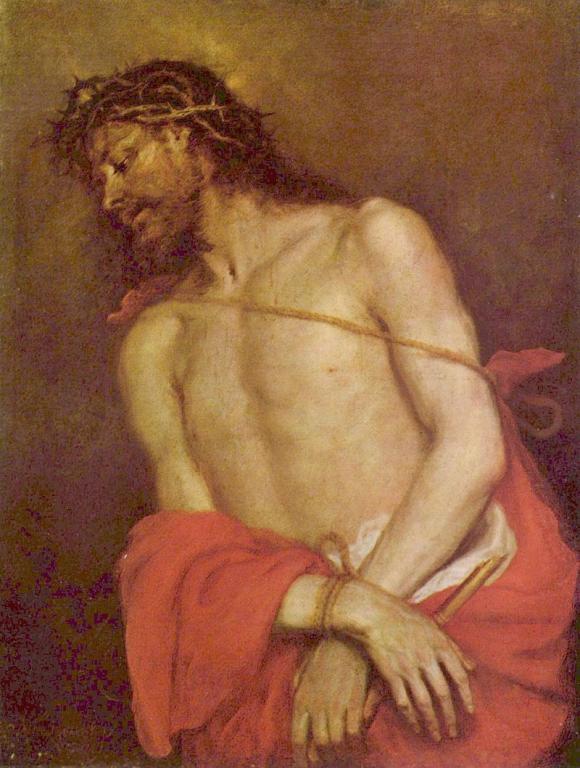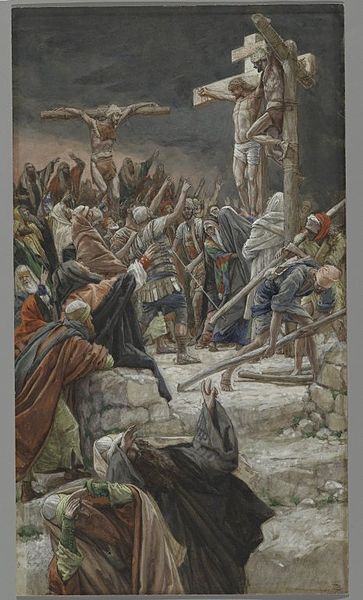
As some of you may be aware, I doubt very much that the familiar “Garden Tomb” is the actual burial place of Christ. But I think that the odds are reasonably good that the rock formation shown immediately above — often called “Gordon’s Calvary” — which is behind the Arab bus station in East Jerusalem and right beside the Garden Tomb enclosure (from which this photograph was taken), is Golgotha, the place of Christ’s crucifixion.
Crucifixion was a horrible way to die. For those with the stomach for it — and I frankly think that all of us ought to contemplate it at least once in a while, so that we can keep in mind the price that was paid for us — here’s an account of what it involved: http://www.frugalsites.net/jesus/crucifixion.htm.

Compare Matthew 27:37, 48; Mark 15:26, 36; Luke 23:33; John 19:18-19, 29
Those who mocked Jesus on the cross presumed that he couldn’t save himself.
But the remarkable fact is that, while he actually could have, he wouldn’t.
That’s one of the most astonishing and impressive parts of the story.

Wikimedia Commons public domain image
Only Luke, of the three synoptic gospels, tells us that one of the thieves was penitent.
The depth to which Jesus had allowed himself to be taken is shown in the fact that even a convicted thief, in the last minutes of his life, as he’s been executed, mocks the Savior.
He did this for us.

James Jacques Tissot (d. 1902)
Wikimedia Commons public domain
Compare Luke 23:36
1.
Jesus’ cry that God had “forsaken” him tells us something very important about the Atonement — that it involved not merely physical death (many people had experienced, and would yet experience, the agony of crucifixion) but spiritual death. And for the perfect Son of God, who had never been alienated from God, this was a completely new and utterly horrible sensation.
2.
It strikes me as significant that, at a certain point (according to John 19:28), Jesus knew that the atonement was finished (“that all was now finished [τετέλεσται]”). And then, having said (in John 19:30) “It is finished [τετέλεσται],” “he bowed his head and gave up his spirit.”
There’s a sense of deliberateness to this. He knew how long he had to hold out in order to finish his mission, and he did it.
Posted from En Gev, Israel











